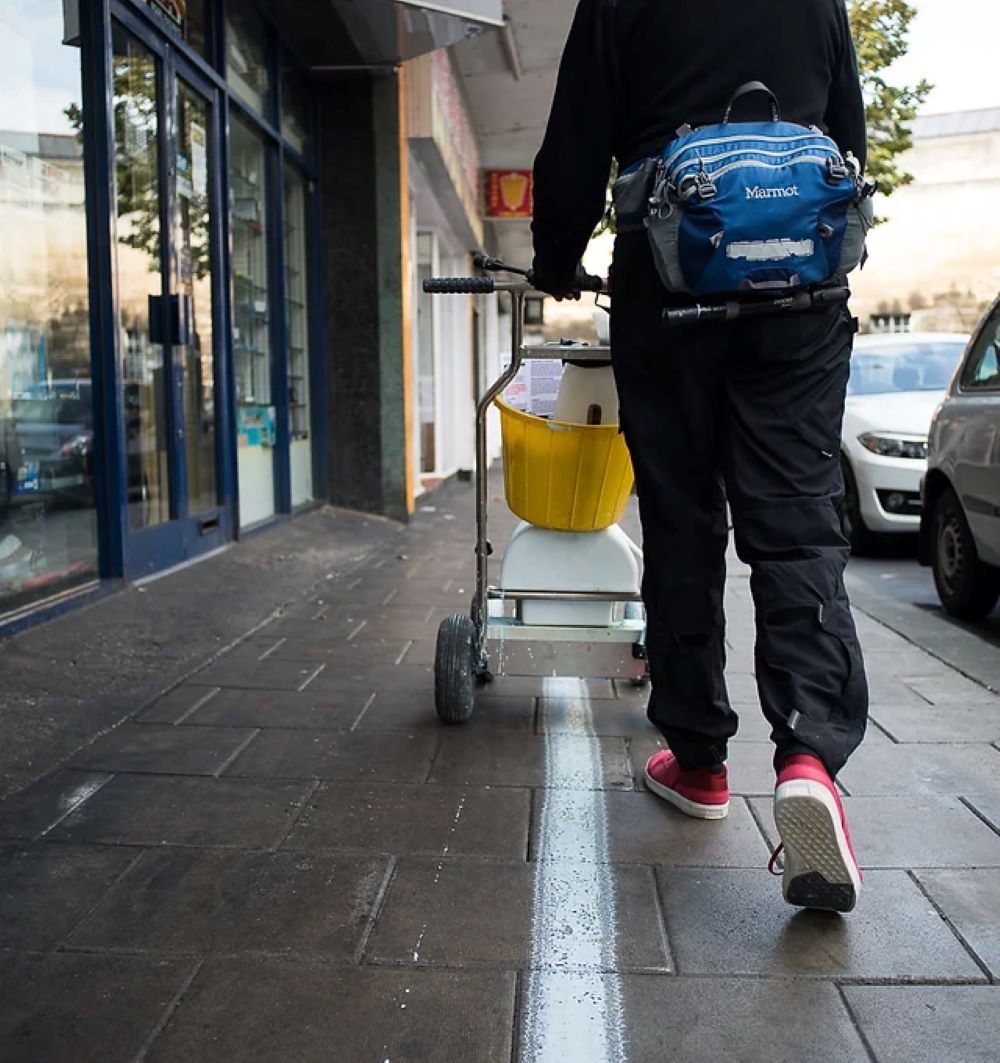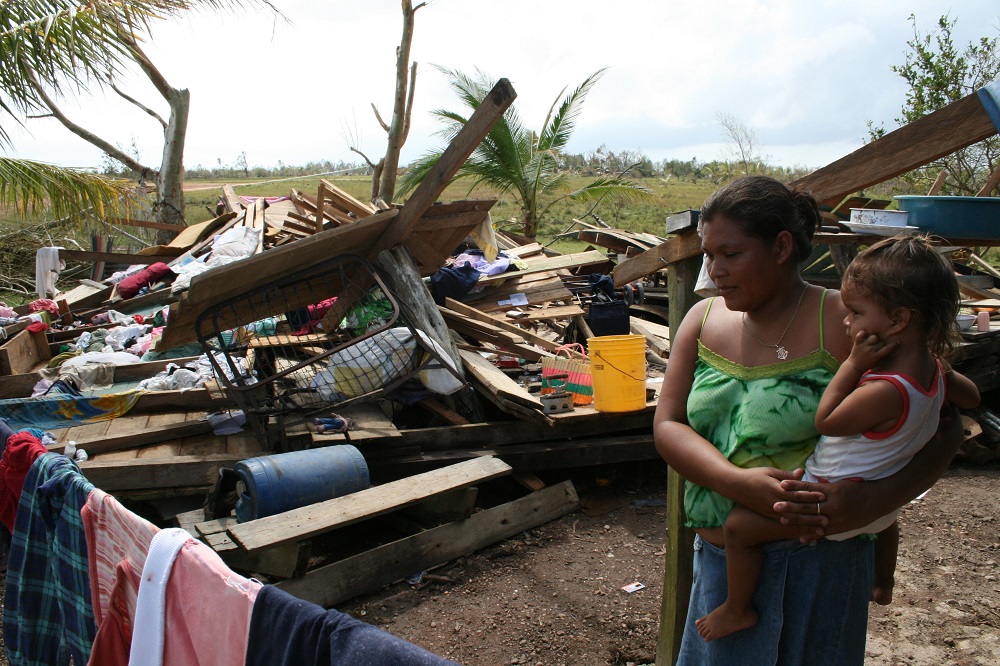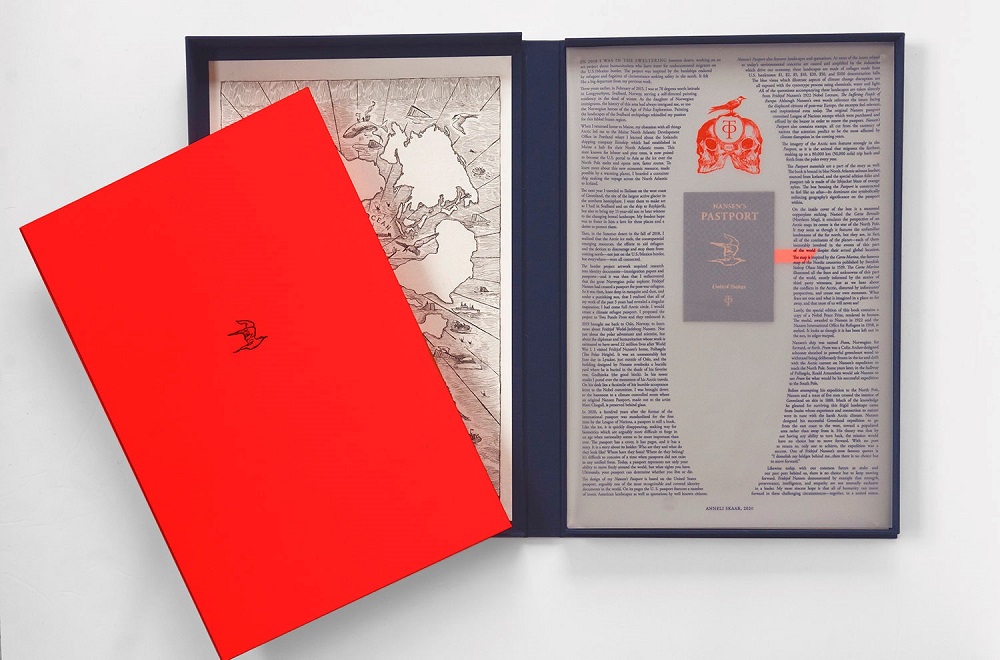
In Conversation With… Ms. Eve Mosher
During the Global Forum for Migration and Development (GFMD) Summit in Geneva in January 2024, PDD partnered with DISPLACEMENT: Uncertain Journeys and the International Organization for Migration (IOM) to present a Marketplace booth exhibition that featured contemporary and socially engaged art projects that seek to spark conversations on migration and development policy challenges and solutions related to disasters and climate change.
 Eve Mosher has been creatively working on the climate crisis since 2007. In HighWaterLine, she visualized a “100-year flood” in New York City by tracing ten feet above the sea-level line using a machine typically used for marking baseball fields. As part of her 70-mile walk, Eve Mosher initiated conversations with the local community. In Heat Response, she engaged three neighborhoods in Philadelphia from 2019-2022 to understand their lived experience with urban heat as well as their visions for more resilient communities. The films were screened across Philadelphia to promote creative approaches for addressing climate-driven extreme heat impacts through healthy, climate-resilient communities.
Eve Mosher has been creatively working on the climate crisis since 2007. In HighWaterLine, she visualized a “100-year flood” in New York City by tracing ten feet above the sea-level line using a machine typically used for marking baseball fields. As part of her 70-mile walk, Eve Mosher initiated conversations with the local community. In Heat Response, she engaged three neighborhoods in Philadelphia from 2019-2022 to understand their lived experience with urban heat as well as their visions for more resilient communities. The films were screened across Philadelphia to promote creative approaches for addressing climate-driven extreme heat impacts through healthy, climate-resilient communities.
In a follow-up exchange with the artist, she shared her perspective about what inspires her, how to help connect people to one another and to the environment, and more.
PDD Secretariat: What first inspired you to connect art, climate change and displacement?
Eve Mosher: I was inspired by news events around climate change in the United States in 2006, particularly stories from Hurricane Katrina, as well as the political climate at the time. I realized that my contribution to the needed discourse was through place-based art and creativity. Art has such a wonderful way of inviting people into conversations that can be complex, emotional or politicized.
PDD Secretariat: How do you think art helps further the global response to disaster displacement?
Eve Mosher: Art can do more than raise awareness (which it is great at!) – it also can create space for solace and healing, it can create space to stretch the imagination and consider possible worlds that are well outside the current systems in which we operate.
PDD Secretariat: In this current climate, the relationship between art, politics and the environment has gotten increasingly complicated. How do you see your role as an artist in this equation?
Eve Mosher: I continue to work on methods to connect people to one another and to their environment. I am looking for creative ways to mutually imagine and build another future. I think we all have more in common with each other than not, but we have to find a way to come together and have those complicated discussions, and art plays a role in that.
PDD Secretariat: What was the most memorable response to your work on these issues?
Eve Mosher: There have been quite a few interesting conversations working on complex climate issues, but I think I am most intrigued/inspired by the communities who come to me because they are interested in taking on the project. I love when I am able to create projects that others want to be a part of.
PDD Secretariat: What role does research play in your creative process?
 Eve Mosher: I am a serious researcher! I found that doing work that was so closely connected to science and policy has to be based in the existing body of research. I have learned to read scientific, academic and policy reports. I really enjoy working with scientists and policy makers directly. The scientific process and the artistic process have a lot of commonalities and I find that working collaboratively leads to surprising outcomes.
Eve Mosher: I am a serious researcher! I found that doing work that was so closely connected to science and policy has to be based in the existing body of research. I have learned to read scientific, academic and policy reports. I really enjoy working with scientists and policy makers directly. The scientific process and the artistic process have a lot of commonalities and I find that working collaboratively leads to surprising outcomes.
PDD Secretariat: How do you see your work contributing to discussions in international policy fora like the Global Forum for Migration and Development?
Eve Mosher: Sometimes I think it is just about seeing things from a different perspective, which artists are really good at doing. It’s not a line on a map or numbers in a spreadsheet, it’s this line which passes through a park, alongside a school, down this street. And it is this family, this life they have lived, these dreams which are the real impact of migration and development.
PDD Secretariat: What would you say is the unique intervention of visual art in this sort of setting? What themes, messages, and ideas are you able to convey through visual art that might not come through in a typical side event or sheet of advocacy messages?
Eve Mosher: Similar to above, it is the shift in perspective. It is bringing stories to life in a way that is more engaging than more straightforward documentation. It is a way of weaving together the different strands of the intentions and/or impacts. Sometimes seeing something unusual or surprising can jar us or inspire us to think and act differently. I hope that comes across in the work being shared in these settings.
Photo credits: Eve Mosher




